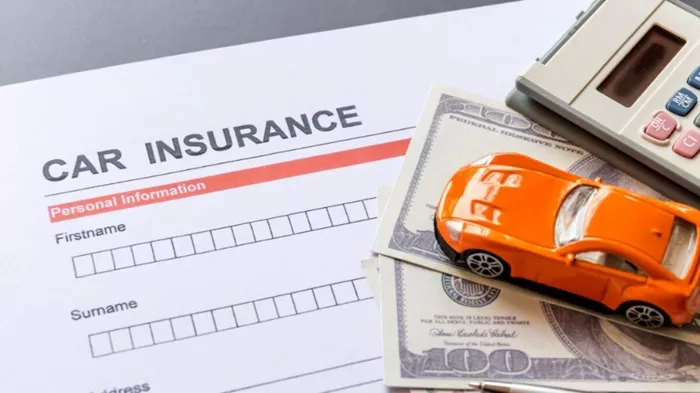Flooding is one of the most destructive natural disasters, causing billions of dollars in damage each year. Yet, many homeowners believe they are safe from floods, thinking it won’t happen to them. Unfortunately, floods don’t always follow the rules. Even if you’re not living in a high-risk flood zone, floods can strike unexpectedly, causing severe damage to your home and belongings.
That’s why understanding when to get flood insurance is essential for protecting yourself financially. The right timing can help ensure you’re covered before disaster strikes.
In this article, we’ll explore when you should consider getting flood insurance, the types of coverage available, and why it’s so important to act sooner rather than later.
What Is Flood Insurance?
Flood insurance is a type of coverage that protects your home and belongings from damage caused by flooding. Unlike most homeowners insurance policies, which do not cover floods, flood insurance helps pay for repairs, replace damaged items, and cover additional living expenses if you’re displaced by flood damage.
Floods are caused by a variety of factors, including heavy rainfall, snowmelt, hurricanes, and even broken dams or levees. Flood insurance typically covers structural damage to your home, such as the foundation, walls, and flooring, as well as personal property, including furniture, electronics, and clothing.
Flood insurance policies can be purchased through two main providers: the National Flood Insurance Program (NFIP), which is backed by the federal government, and private flood insurance providers, which offer more flexible options.
Why Should You Get Flood Insurance?
Flood insurance is crucial because floods can happen anywhere, and they can be extremely expensive to repair without insurance. Even areas that aren’t labeled as flood zones can experience flooding, making it essential for homeowners in both high-risk and low-risk areas to consider coverage.
Here are a few reasons why flood insurance is so important:
Flooding Happens Unexpectedly: No one can predict when a flood will occur. Even if your home is not located in a flood zone, heavy rains or other factors can quickly cause water to flood your property. Having flood insurance provides peace of mind, knowing you’re covered no matter what.
Homeowners Insurance Doesn’t Cover Flooding: Most standard homeowners insurance policies exclude coverage for flood damage. This means if your home is flooded, you would have to pay out of pocket for repairs and replacement of damaged belongings.
Flooding Is Expensive: Flood damage can be devastating. Just a few inches of water can cause thousands of dollars in repairs. Without insurance, you could be left with a significant financial burden. Flood insurance ensures you’re financially protected in the event of a flood.
Federal Assistance Might Not Be Enough: If your home is damaged by a flood, you might be able to get assistance from the federal government through disaster relief programs. However, this assistance is often limited and may not cover the full cost of repairs. Flood insurance provides more comprehensive protection.
When Should You Get Flood Insurance?
You might be wondering, “When is the right time to get flood insurance?” The truth is, there’s no one-size-fits-all answer. The timing depends on several factors, including where you live, the flood risk in your area, and whether you have a mortgage. Below, we’ll discuss the best times to get flood insurance.
1. Before You Buy a Home
One of the best times to get flood insurance is before you purchase a home. When buying property, especially in flood-prone areas, it’s important to assess the flood risk of the location. Many people overlook this part of the process, assuming that flood insurance is only necessary for homes located in designated flood zones. However, as mentioned earlier, floods can happen anywhere.
Before making an offer on a home, check with the seller or a real estate agent to determine if the property is in a high-risk flood zone. If it is, flood insurance will likely be required by your mortgage lender. Even if the property is not in a flood zone, it’s still a good idea to get coverage, as flooding can still occur unexpectedly.
By purchasing flood insurance before you buy the home, you ensure that your coverage is in place as soon as you move in. This prevents any gaps in protection, which is crucial for your financial security.
2. When You Live in a Flood Zone
If you live in a high-risk flood zone, getting flood insurance is crucial. Homes in these areas are more likely to experience flooding, especially during heavy rains, hurricanes, or other natural disasters. If you live in such an area and have a mortgage, your lender will likely require you to carry flood insurance as part of your loan agreement.
But even if flood insurance isn’t required, it’s still a good idea to get it. The risk of flooding in these zones is higher, and the damage can be extensive and expensive. Flood insurance helps protect your home, belongings, and finances from potential devastation.
3. Before a Major Storm or Flood Season
It’s always best to buy flood insurance before a major storm or the peak of flood season. Waiting until the storm is already approaching could result in a waiting period before your policy becomes active. Most flood insurance policies, including those provided through the NFIP, have a 30-day waiting period before the coverage kicks in. This means if you wait until a storm is imminent, you may not be able to get coverage in time.
To avoid this issue, buy flood insurance well in advance of flood season, especially if you live in an area that’s prone to storms or heavy rains. If a major storm or flood event is forecasted, it’s often too late to purchase insurance or make changes to your policy.
4. If You’ve Recently Made Home Improvements
If you’ve recently made improvements to your home, such as adding a finished basement, expanding the structure, or upgrading appliances, you should consider getting flood insurance or increasing your coverage. These changes could increase the overall value of your property, meaning you may need more coverage to fully protect your investment.
Additionally, certain improvements, like finishing a basement, may increase the likelihood of flood damage. In this case, flood insurance can help protect the new areas of your home that weren’t previously covered.
5. If Your Home Is in a Low-Risk Flood Zone
Even if you live in a low-risk flood zone, you might want to consider purchasing flood insurance. Many people wrongly assume that because they’re in a low-risk zone, flooding will never happen to them. However, low-risk doesn’t mean no risk.
In fact, about 25% of all flood claims come from properties in low- to moderate-risk areas. If you’re in a low-risk zone, flood insurance can still be a smart financial investment. It offers protection from the unexpected and helps cover the cost of repairs if flooding occurs.
Some homeowners in low-risk zones also take advantage of the option to purchase a lower-cost policy, known as a “preferred risk policy.” This can be an affordable way to protect your home from flood damage without paying the higher premiums that come with high-risk flood zones.
6. If You Have a Mortgage
If you have a mortgage and live in a designated high-risk flood zone, your lender will likely require you to get flood insurance. This requirement helps protect the lender’s investment in case of flood damage. However, even if you don’t live in a high-risk area, some lenders may still recommend or require flood insurance for their own protection.
If you’re planning to buy a home or refinance your mortgage, check with your lender to find out if flood insurance will be required as part of your loan. Keep in mind that lenders usually require flood insurance to be in place before you close on the loan.
7. When You’ve Seen Flooding in Your Area
If you’ve noticed an increase in flooding in your area or your neighbors have experienced flooding, it’s time to consider flood insurance. Changing weather patterns, construction, and development in your area can all increase the risk of flooding. Even if your home hasn’t been affected yet, it’s wise to prepare ahead of time.
Once flooding begins to affect your neighborhood, it might be too late to purchase insurance or make changes to your policy. Flooding can cause significant damage quickly, so it’s best to act early.
Types of Flood Insurance
When you decide to get flood insurance, you’ll need to choose between two main types of policies: the National Flood Insurance Program (NFIP) and private flood insurance.
NFIP Flood Insurance: This is a government-backed flood insurance program. It offers coverage for both residential and commercial properties. The NFIP sets coverage limits, which are generally lower than those available from private insurers. However, it’s available to most homeowners, even in low-risk areas.
Private Flood Insurance: Private insurers offer their own flood insurance policies, which can provide higher coverage limits, faster claims processing, and more flexible options than the NFIP. However, private policies can be more expensive and may not be available in all areas.
Conclusion
Flood insurance is one of the most important types of coverage you can have to protect your home and belongings from unexpected disasters. The best time to get flood insurance is as soon as possible—whether you’re buying a home, living in a flood zone, or simply want to protect your property from the risks of flooding.
Flooding can happen at any time, and it’s crucial to have the right coverage in place before disaster strikes. By purchasing flood insurance before a storm, ensuring you have the appropriate coverage, and staying proactive about flood risks, you can safeguard your home and peace of mind for years to come.
Related topic:
Is Flood Insurance Mandatory in Houston?
What Does Flood Insurance Cover in NJ?
How Much Is Flood Insurance in NJ and What Affects the Price?




















